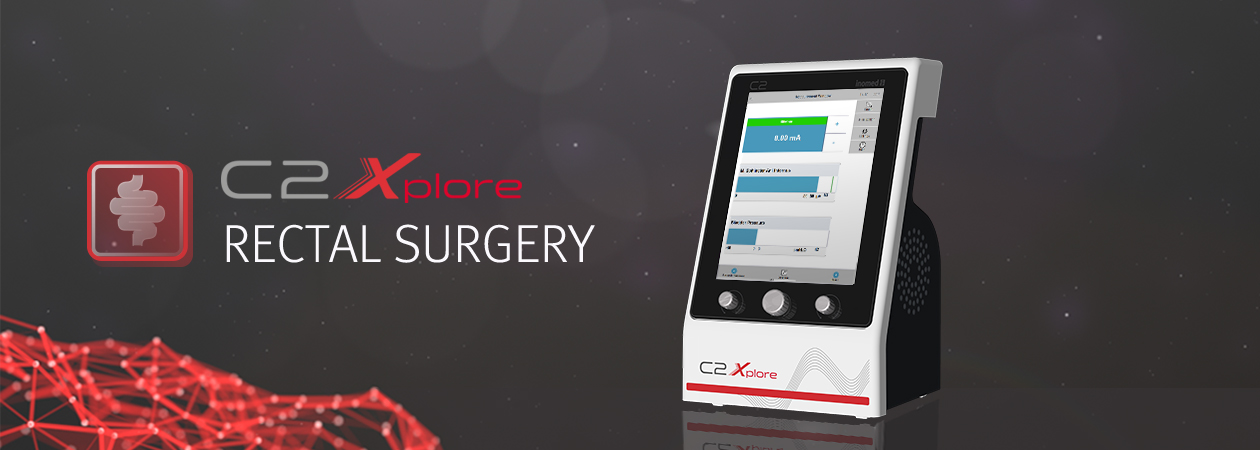
The extremely complex nerve structures of the autonomic nervous system in the minor pelvis pose a considerable risk during interventions in colorectal surgery. Statistics of post-operative anorectal and urogenital disorders indicate that a large proportion of patients suffer from incontinence and sexual dysfunction after minor pelvic surgery.*
*Lent V., Junginger T., Nervenstörungen der Harnblasen- und Sexualfunktionen nach Rektumresektionen und -extirpationen, Chirurgische Allgemeine Zeitung, 12 (2012)
More than 12 years of clinical research have resulted in a novel technology for locating and monitoring the complex autonomic nervous system in the minor pelvis. inomed’s pelvic Intraoperative Neuromonitoring (pIOM), which is patented in Germany, can be used for a variety of interventions in the field of colorectal surgery.
The EMG signals of the internal and external anal sphincter and bladder pressure are monitored intraoperatively by the pIOM® technology. This technology can thus help to preserve the functions of the monitored structures inside the minor pelvis after surgery despite the invasive nature of the therapy.** The stimulation sites in the minor pelvis are the hypogastric plexus and the pelvic splanchnic nerves.
The simple application of the procedure supports the surgeon’s workflow without causing any substantial surgical delay.***
** Kauff D.W., Kneist W., Risk Factor Analysis for Newly Developed Urogenital Dysfunction after Total Mesorectal Excision and Impact of Pelvic Intraoperative Neuromonitoring - a Prospective 2-Year Follow-Up Study, Journal of Gastrointestinal Surgery, 6 (2017)
*** Wałęga P. et al. “Intraoperative neuromonitoring of hypogastric plexus branches during surgery for rectal cancer - preliminary report,” Polski przeglad chirurgiczny, 89/2 (2017)
The C2 Xplore is the perfect assistant for neuromonitoring in colorectal surgery with its matching accessories >>.